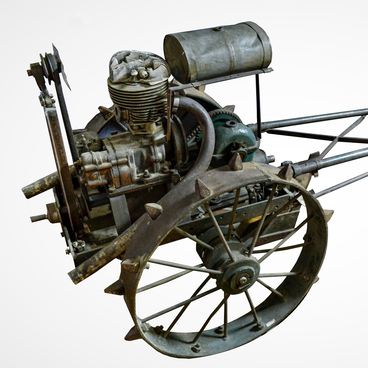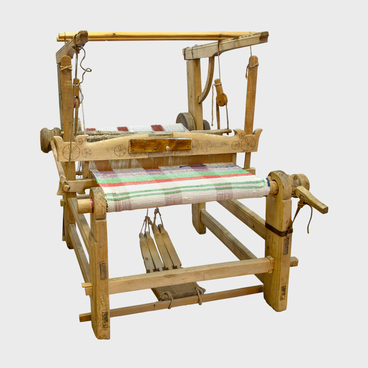There are several stone axes of the Neolithic era (the 6th — 4th millennium BC) in the Verkhnyaya Pyshma Historical Museum. These primitive tools were similar to modern axes only in the way they were used — for cutting plants and tree branches, and also digging the ground and using them during hunting.
To make a stone ax, in ancient times people collected massive stones up to 10 –20 centimeters and weighing up to one kilogram. Then they were knapped with another hard stone, sharpening one end and rounding the other — a technique called knapping. One side of the stone turned out to be a working one and was used to inflict blows, and the other one had a smooth surface, which was used to hold the tool.
The shape of the stone ax depended on the size and appearance of the stone found. The exhibit from the museum collection was a medium-sized tool: it is 14 centimeters long and 4.5 centimeters wide.
In the process of evolution, people learned to process, split, crush and even grind stones. Along with this, the tools of labor were also improved. A wooden handle was added to the stone chopper, and they were tied together. For this, the veins or hide of various animals were used.
Gradually, the axe began to look less like a stone and more like a tool. It was used only for cutting plants.
For hunting, a new separate tool appeared — a pointed tip that hit the target. Another tool, a scraper, was used by women to process the animal hide.
The stone axe began to disappear on the territory of modern Europe in the 2nd millennium BC, when bronze items appeared. The axe chopper was now made from metal — it did not crumble, unlike stone, and the blade turned out to be sharper.
Over time, a new type of axe was invented — a battle axe. This weapon was small in size: its length was 60 — 80 centimeters, and it weighed up to one and a half kilograms. The blade was made from obsidian — volcanic glass formed from cooled lava. Battle axes were common in South America and are still found among the indigenous population today.
To make a stone ax, in ancient times people collected massive stones up to 10 –20 centimeters and weighing up to one kilogram. Then they were knapped with another hard stone, sharpening one end and rounding the other — a technique called knapping. One side of the stone turned out to be a working one and was used to inflict blows, and the other one had a smooth surface, which was used to hold the tool.
The shape of the stone ax depended on the size and appearance of the stone found. The exhibit from the museum collection was a medium-sized tool: it is 14 centimeters long and 4.5 centimeters wide.
In the process of evolution, people learned to process, split, crush and even grind stones. Along with this, the tools of labor were also improved. A wooden handle was added to the stone chopper, and they were tied together. For this, the veins or hide of various animals were used.
Gradually, the axe began to look less like a stone and more like a tool. It was used only for cutting plants.
For hunting, a new separate tool appeared — a pointed tip that hit the target. Another tool, a scraper, was used by women to process the animal hide.
The stone axe began to disappear on the territory of modern Europe in the 2nd millennium BC, when bronze items appeared. The axe chopper was now made from metal — it did not crumble, unlike stone, and the blade turned out to be sharper.
Over time, a new type of axe was invented — a battle axe. This weapon was small in size: its length was 60 — 80 centimeters, and it weighed up to one and a half kilograms. The blade was made from obsidian — volcanic glass formed from cooled lava. Battle axes were common in South America and are still found among the indigenous population today.



